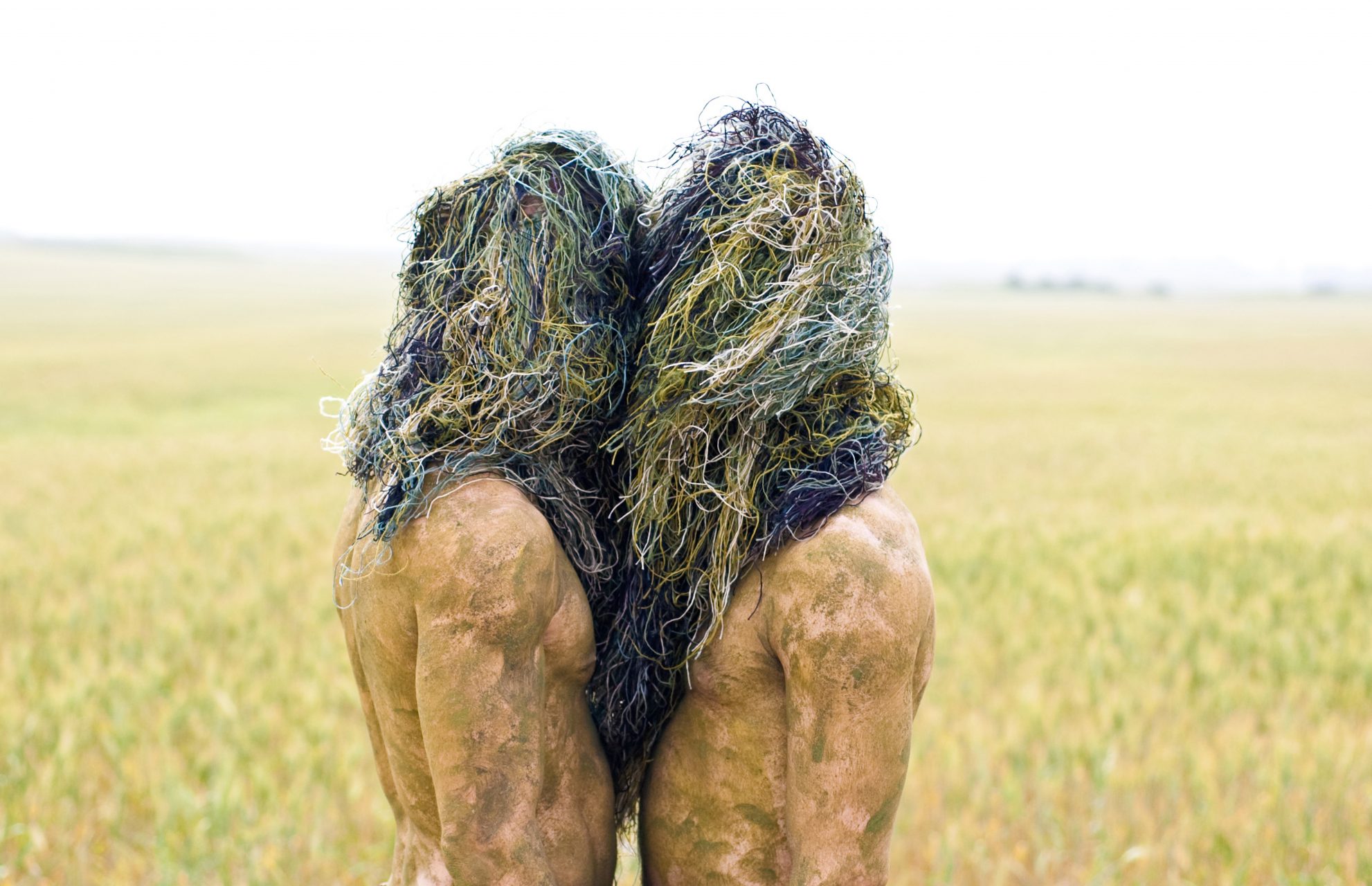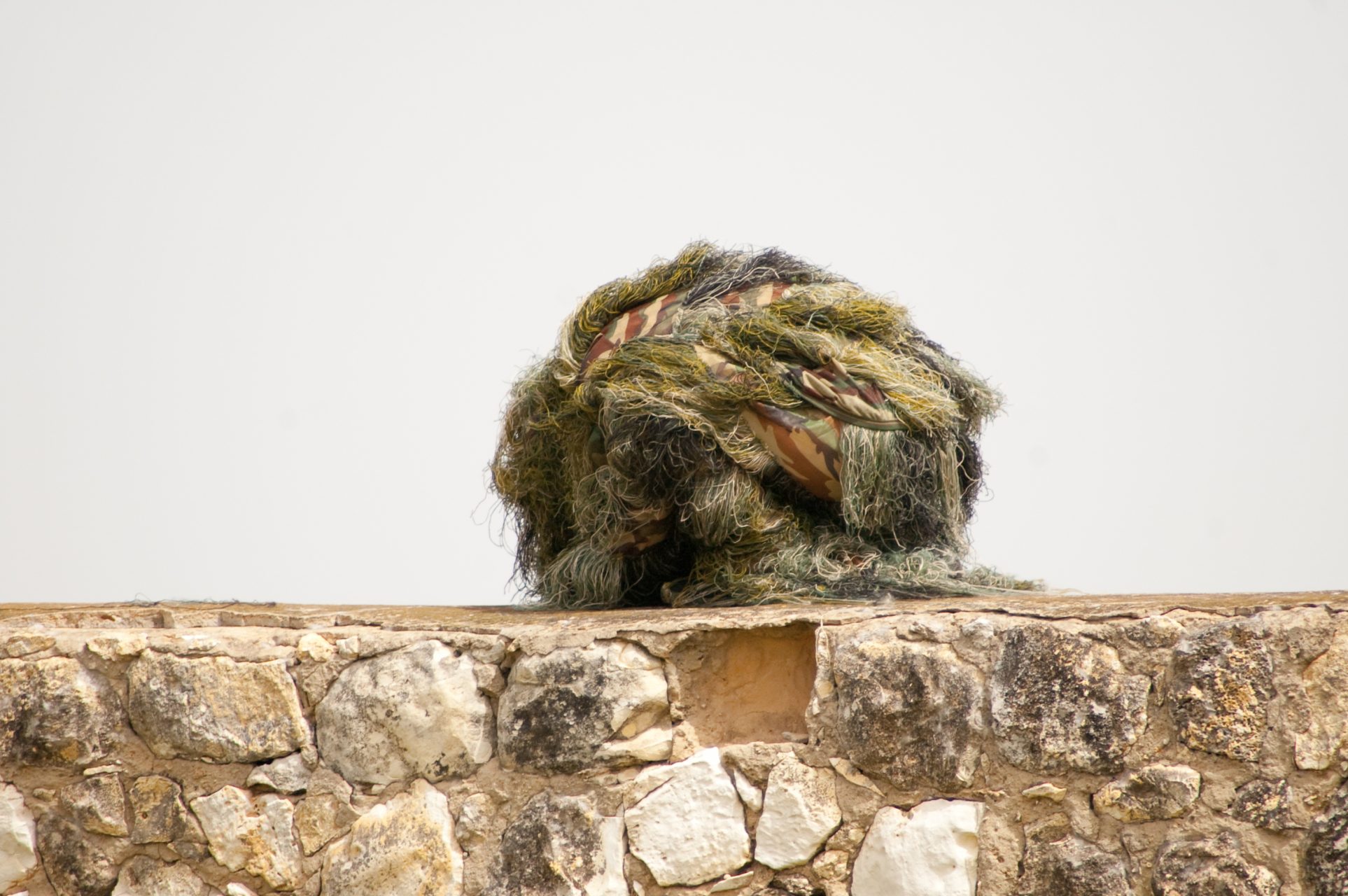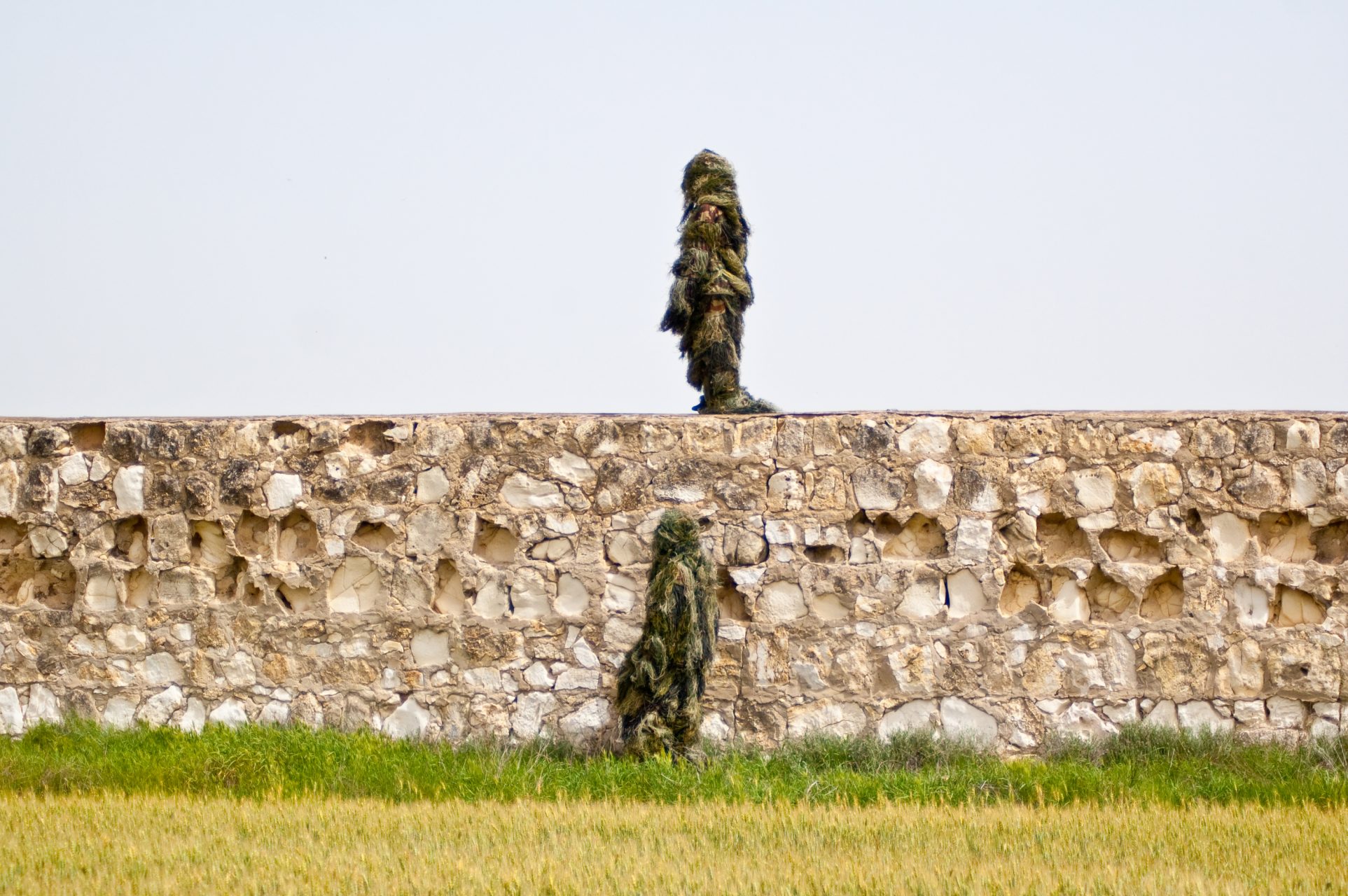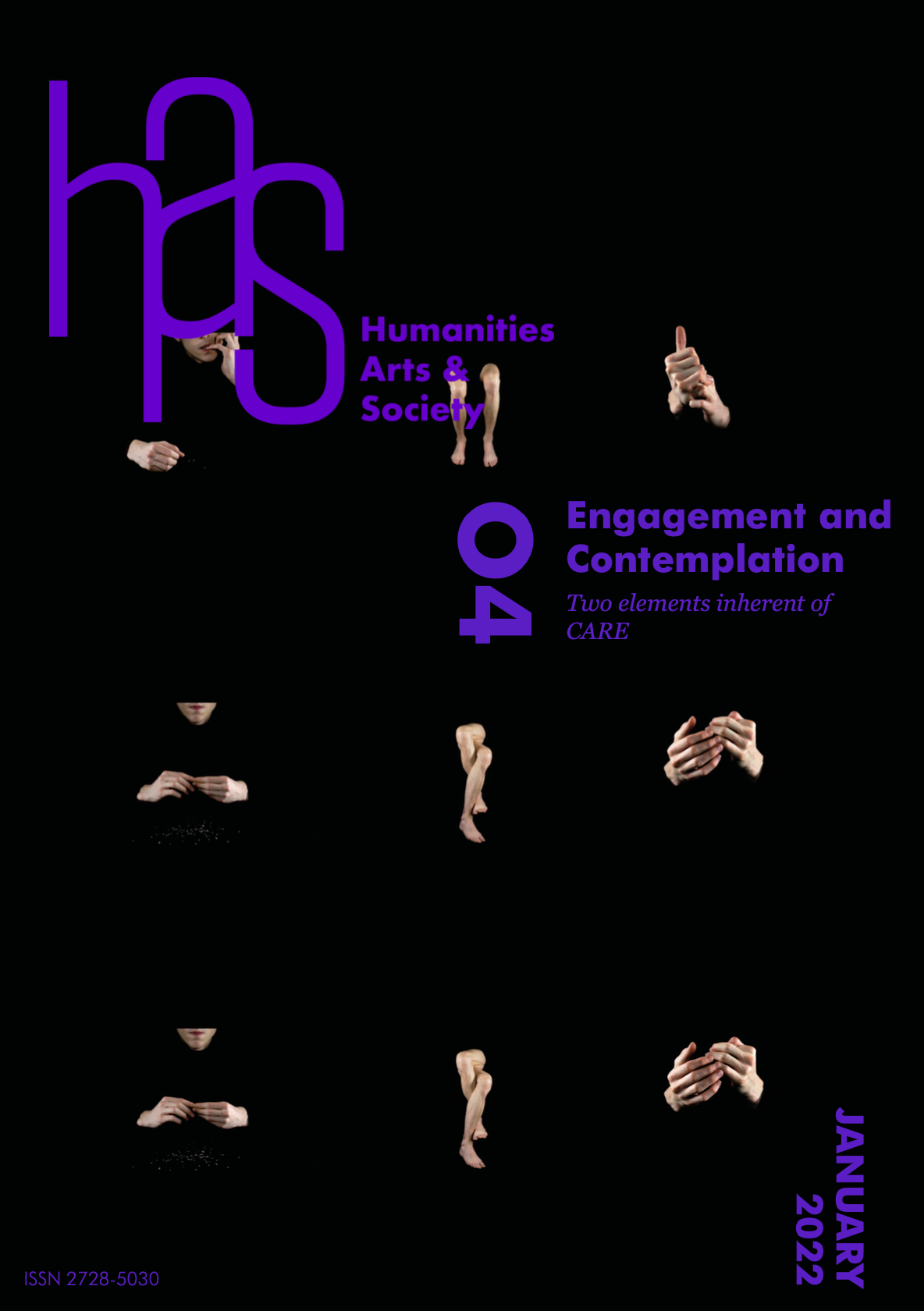
In dialogue with the works
Fearful Days and Second Nature
by the artist Dafna Shalom
Purity of heart is to will one thing
Soren Kierkegaard
Engagement and contemplation might seem to be mutually exclusive—activism or quietism. One is either out there fighting the good fight or withdrawn into a sphere of passive reflection. How can they be brought together? And in what way can they possibly be elements of care—specifically, care for society or care for the world, especially a world dominated by technology? If not contradictory, is the relationship between engagement and contemplation conjunctive? Complementary? The active/passive dichotomy may be misleading. Perhaps engagement and contemplation elicit a dynamic dyad—a unity—where, to be complete, the one necessarily requires the other. I would like to investigate this possibility—that contemplation is an active mode of engagement, that engagement without contemplation is not genuine and, if not grounded in reflection and forethought, does not yield understanding, and is little more than mere behaviour. As such, this bifurcation can hardly be associated with care.
In this discussion, I will draw upon philosophical sources, invoke religious traditions, and refer to principles of psychology. I will consider the engagement/contemplation dyad within the idea of care, and discuss it with reference to Hannah Arendt, Martin Heidegger, and Simone Weil.
In her book The Human Condition, Hannah Arendt developed a distinction between the vita activa and the vita contemplativa —the active life versus the contemplative life. This distinction may be helpful to us as we consider how Arendt understands human action. Arendt’s entire authorship is an expression of amor mundi—love of the world. She wrote that what is most difficult is “to love the world as it is.” Loving the world does not mean either uncritical acceptance or contemptuous rejection, but an unwavering facing up to and comprehension of that which is. The idea of amor mundi, in fact, suggests a synthesis of engagement and contemplation—an engagement with the world that at once lovingly embraces it, cleaves to it, and ponders it within one’s heart. How is this possible, and what sort of action does this kind of love provoke?

In Arendt’s usage, action is to be understood as something different from labour, which is physical and characteristic of animals, and work, which is productive, and the activity by which workers make something enduring. Labour is necessary for survival. Labour, for example, includes biological processes which respond to the demands of the body, and are not a meaningful expression of what we intentionally or personally care about. By contrast, work bestows meaning upon what we do. With work, we put something (a table, a book, a Covid vaccine, a ventilator) into the world. In this sense, work is a kind of care for the world.
Three linked and mutually-elucidating terms deployed by Arendt to describe the human condition—action, natality, and plurality—help us to understand how she approaches action and the vita activa. Natality is the idea that, with every birth, new possibilities emerge, and offer a foundation for hope. Arendt’s collection of biographical essays, Men In Dark Times, brings together a group of disparate personalities—Karl Jaspers, Rosa Luxemburg, Pope John XXIII, Isak Dinesen, Bertolt Brecht, Randall Jarrell, and others—whose lives and work, she contends, illuminated the early part of the 20th century and satisfy her premise: “That even in the darkest of times we have the right to expect some illumination, and that such illumination might well come less from theories and concepts than from the uncertain, flickering, and often weak light that some men and women, in their lives and their works, will kindle under almost all circumstances and shed over the time span that was given to them….”
The diversity of this roster shows the importance of plurality. Different points of view, opinions and roles—the kind of exchange possible only within a pluralistic and inclusive society—illuminate the path into the future. The commonality of these individuals is their illumination, that which fosters hope and manifests care for the world—amor mundi. For Arendt, illumination is sparked by the work done by these individuals, and is an expression of their notable personalities.
The human condition, and the kind of action possible only by humans, takes place on the stage of history. The wars and revolutions of the tumultuous twentieth century were conducted under the cloud of unprecedented violence made possible by the advancements in technology—advancements altering the nature of human action and concentrating power to yield the possibility of totalitarian rule. André Malraux’s novel, La Condition Humaine, is set in Shanghai in 1927, during the hostilities between the Kuomintang and the Communists. The novel follows a group of anti-KMT protagonists. The central character is Kyo Gisors, a Communist organizer who is the commander of the revolt, who believes that every person should choose his own meaning, and not be governed by any external forces. At one point in the novel, he listens to a tape recording of an unfamiliar male voice and is shocked to discover that it is his own voice. An explanation of the phenomenon does little to settle his distress about not recognizing his own voice. The incident stands as a metaphor for man’s fate—the English translation of the book’s title—the inability to be in touch with one’s self. The famous admonition of Socrates to know thyself, even in the midst of a passionate collective effort, is thwarted by technology. The possibility of the examined life—the contemplation before engagement—is questioned. In his novels, as in his own life, Malraux keeps the intellectual hero and the man of action very close together. Many critics have pointed out how aptly Malraux’s fiction anticipates what we now refer to as existentialist “engagement.”
In characterizing the human condition as suspended between past and future, Arendt quotes one of the enigmatic parables of Franz Kafka:
He has two antagonists: the first presses him from behind, from the origin. The second blocks the road ahead. He gives battle to both. To be sure the first supports him in his fight with the second, for he wants to push him forward, and in the same way the second supports him in his fight with the first, since he drives him back. But it is only theoretically so. For it is not only the two antagonists who are present, but he himself as well, and who really knows his intentions? His dream, though, is that sometime in an unguarded moment—and this would require a night darker than any night has ever been yet—he will jump out of the fighting line and be promoted, on account of his experience in fighting, to the position of umpire over his antagonists in their fight with each other.
In Arendt’s reading of this parable, Kafka’s fight begins right where humanity now finds itself and ends indecisively, awaiting some future judgement. Under such circumstances, thought-based direct action and intervention appear futile. Arendt points out that, for Hegel, the task of the mind is to understand what happens, and on this basis to reconcile or gain peace with the world. When this is impossible, when the mind cannot reconcile and find peace with the world, one becomes engaged in a kind of interior warfare. As Arendt points out, this dilemma had led a previous generation of European intellectuals to turn to politics in order to escape from thought into action. They subsequently became the founders of existentialism, which has been described by Arendt as “an escape from the perplexities of modern philosophy into the unquestioning commitment to action.”
Dafna Shalom – Yamim Noraim / Fearful Days – video – 2010
This concurs with her interpretation of the aphorism of Resistance poet Rene Char from Feuillets d’Hypnos: “Notre héritage n’est précédé d’aucun testament”, translated by Arendt in the preface to Between Past And Future as: “Our inheritance was left to us by no testament.” According to Arendt, these few words capture the state of humanity or the human condition (at least in Europe) at the end of the Second World War. It represents what she saw as the crisis in culture, the breaking off with tradition. The specific situation on which Arendt meditates was the loss felt by members of the Resistance, whose return to ordinary life did not offer the opportunity for the sort of action that previously had been the source of meaning, and their way to engage with and contribute to the world.
Arendt does not understand action as the abandonment of philosophical reflection and introspection, but rather contemplation as an active mode of engagement. Amor mundi is a caring engagement with the world. Let us turn our attention to the idea of care, and briefly to Heidegger’s exposition of the concept.
As is well known, Arendt was a student of Martin Heidegger. His involvement in politics as a Nazi was clearly an insult to philosophy. She called it a personal mistake, and understood it as a tragic and extreme instance of why philosophers should not seek political power. In his now-infamous 1933 Rectoral address at the University of Freiburg—a blend of philosophy and propaganda—he stated:
But what does єωρíα mean to the Greeks? It is said: pure contemplation, which only remains bound to the matter in question and all that it is and demands. This contemplative behaviour is said, with reference to the Greeks, to be pursued for its own sake. But this reference is mistaken. For on the one hand, “theory” is not pursued for its own sake, but only in the passion to remain close to and under the pressure of what is. On the other, the Greeks fought precisely to comprehend and carry out this contemplative questioning as one, indeed as the highest, mode of human ε’ υε’ ργєια, of human “being-at-work.” They were not concerned with aligning practice with theory. Rather, the reverse was true: theory was to be understood as the highest realization of genuine practice.

Heidegger attributed to early Greek thought the notion that thinking, theory, or wisdom, was the ultimate realization of practice or action. But what is care, and what does it mean to care? For Heidegger, care (sorge) is the salient characteristic of Dasein, the term he uses in his early work to designate an active human being. The care or concern of Dasein is for its own being-in-the-world—that is, a kind of concern for one’s self. However, our theme has to do with care for others, whether it be toward an individual or a more abstract concern toward people caught in a web of interactions. These may include those that result from climate change, aging populations, challenges to gender equality, educational opportunities, and the cruelty of poverty.
What does it mean to contemplate these circumstances, and how is this a matter of engagement? Without attempting to explain Heidegger’s approach to existence in his 1928 masterwork Zein Und Zeit (Being And Time), note the centrality of care or concern in relation to being-in-the-world:
Dasein’s facticity is such that its Being-in-the-world has always dispersed [zerstreut] or even split itself up into definite ways of Being-in. The multiplicity of these is indicated by the following examples: having to do with something, producing something, attending to something and looking after it, making use of something, giving something up and letting it go, undertaking, accomplishing, evincing, interrogating, considering, discussing, determining. All these ways of Being-in have concern (‘Bersorgen’) as their kind of Being.
Heidegger’s existential ontology, his theory of the being of humanity, embeds care in the action of being—in a sense, to be is to care. But this care, as well as our awareness of our very being, can be occluded. Indeed, the history of western metaphysics, Heidegger argues, has done just that. Philosophy has pursued certain questions to acquire knowledge. Heidegger’s mode of questioning, on the contrary, is a questioning of being, or an opening of being—the emphasis remains with the questioning, not results or scientific knowledge. The questioning of being is something like following a path, and it is how we engage with the world.
Simone Weil stands as an acute example of one suffering from the same condition that afflicted those intellectuals who returned to civilian life after being active participants of the Resistance. Although educated at the École Normale Supérieure, and for a while a teacher of philosophy, she left that profession to be a factory worker, not just to be in political solidarity with oppressed workers, but to experience her own humanity in the world. The world is formed, on the one hand, historically; its manifestation in the present is what it is because of the histories, material and spiritual, that are its antecedent form. “Our inheritance was left to us by no testament,” in this context, explicitly refers to the human condition precisely because the human condition exists at the intersection of freedom and necessity.

Weil believed that the philosopher’s mandate was “exclusively an affair of action and practice” whereby the two—philosophical reflection and social/political action—were fused into a singular way of life. For her, the two ways of life characterized by Hannah Arendt as the vita contemplative and vita activa are merged. Weil’s philosophy repudiates the tradition, exemplified by Descartes’ designation of res cogitans (the thinking thing), as the essence of humanity. In her essay “Human Personality,” she wrote:
There is something sacred in every man, but it is not his person. Nor yet is it the human personality. It is this man; no more and no less. If it were the human personality in him that was sacred to me, I could easily put out his eyes. As a blind man he would be exactly as much a human personality as before. I should not have touched the person in him at all. I should have destroyed nothing but his eyes.
This transformation of the idea of consciousness is accompanied by the elevation of the impersonal. Her exchange with humanity is a far cry from the doxic exchange, born from natality and plurality, lauded by Arendt. It begins as labor, and is more like biological metabolism—that is, a process of mutual exchange—necessary for the very possibility of life preservation. The emphasis on the centrality of the existing individual or the self, as well as the work of notable individuals illuminating dark times, is by Weil banished.
From an entirely different perspective, Hans Jonas has argued that metabolic exchange is, on the cellular level, the primitive beginning of freedom. The phenomenon of life itself is grounded in freedom, and is inseparable from care for the world. This notion of incipient freedom, found in the first stirrings of life, challenges the idea that the intellect or personality is the key to humanity.
On the level of philosophical consciousness, Weil seems to be saying, one cannot abstract intellect from the impersonal reality of humanity. She had been deeply influenced by Marx, along with her generation of European intellectuals, and as a schoolgirl had announced her sympathy for the Bolshevik cause. But she lost faith in the mechanisms of revolution, and witnessed the social deterioration that resulted from a widespread bureaucratization of life under capitalism after the First World War. She saw her embrace of the life of a factory worker as the legitimate way for philosophy to engage in the world. Her radical politics and her appreciation of Roman Catholic mysticism together were sources for her way of being-in and caring for the world. Hannah Arendt regarded the analysis of labor in Weil’s book La Condition Ouvriere (The Workers’ Condition) to stand alone as an inquiry into the issue of the plight of workers, being without prejudice and sentimentality, and indeed an elaboration of her own position.
Weil articulated what she called paying attention, suggesting that it is how care for the world is possible. The affliction of factory workers is evidence of a kind of suffering that demands the engagement of philosophy—philosophy which is itself action. This kind of suffering is endemic in the modern world; it is a suffering that is the consequence of the imposition of pure power on humans, and is different from other forms of suffering because it is not recognizable in the usual ways to an onlooker. This affliction demands the full resources of one’s humanity to understand its truth. In the face of this affliction, philosophy must take the form of paying attention. This is radical being-in-the- world; it is amor mundi suffused with care. The philosophical form of paying attention does not respect a distinction between engagement and contemplation. They are united on the level of impersonal humanity.

In this era of the fourth discontinuity1, a time when (as Marx already recognized) we acknowledge the co-evolution of humans and machines and when, according to some, we are entering upon the age of post-humanity, a time when the sources of power and authority are less obvious than ever before and the issues of engagement on behalf of the world, natural and artificial, have risen to the level of crisis. Yet our responses to the multiple crises of our time have in common something other, or less than, amor mundi.
Hannah Arendt’s amor mundi, Martin Heidegger’s “being-in-the-world,” and Simone Weil’s “paying attention” all suggest the mutual integration of engagement and contemplation. In a wide-ranging interview (which its translator William J. Richardson said had the quality of a last will and testament) given to Der Spiegel in 1966 but only published after his death in 1976, Heidegger offered his opinion that philosophy as such was over, and announced that “only a god can save us.” In these reflections, focused on his Nazi involvement and the restoration of the German university as proposed in his Rectoral address, Heidegger took the occasion to reflect again on the meaning of Being, particularly under the guise of what for him most profoundly characterized contemporary culture—labeled by him technicity—the power of modern, scientific technology to obscure our connection to being and thereby the care which characterizes being-in-the-world.
Heidegger offered no program, and asserted only that technology cannot redeem us. Arendt’s most difficult task, that of loving the world, and Weil’s moral imperative to pay attention, must now be pursued under the influence of technicity. In this endeavor, reconciliation with the world demands both purity of heart and the integration of engagement with contemplation.
Reference
1NDT : voir The Fourth Discontinuity, de Bruce Mazlish, 1993
Harold P. Sjursen is professor Emeritus at NYU Tandon School of Engineering. Teacher and administrator in higher education for over 40 years, serving on the faculty of a liberal arts college and a school of engineering. With an educational background in the history of philosophy, he has had a lifelong interest in science and technology. His current research and writing interests focus on the philosophy of technology, global philosophy and technological ethics.
Dafna Shalom studied at the International Center for Photography in New York, and graduated from Hunter College with a degree in fine arts (1997). Her works are in private and public collections internationally.While living in New York Shalom assisted the multimedia artist Oliver Herring and the Public Art fund to realise contemporary art projects.Shalom’s works, conceptual and emotional, question otherness, corporal fragility and identity. Shalom exhibited in spaces such as The Minnesota Center for Photography, USA, Hudson Valley Center for Contemporary Art, Peekskill, USA, The National Gallery, New Delhi, The Petach Tikva museum, Israel, Haifa Museum, Israel, Camera Obscura, Tel Aviv, Israel, Clamp Art, New York, the Suzanne Dellal Performing Art Center, Israel, The Jewish museum, New York, CCCB Barcelona and more.
Harold P. Sjursen is professor Emeritus at NYU Tandon School of Engineering. Teacher and administrator in higher education for over 40 years, serving on the faculty of a liberal arts college and a school of engineering. With an educational background in the history of philosophy, he has had a lifelong interest in science and technology. His current research and writing interests focus on the philosophy of technology, global philosophy and technological ethics.
Dafna Shalom studied at the International Center for Photography in New York, and graduated from Hunter College with a degree in fine arts (1997). Her works are in private and public collections internationally.While living in New York Shalom assisted the multimedia artist Oliver Herring and the Public Art fund to realise contemporary art projects.Shalom’s works, conceptual and emotional, question otherness, corporal fragility and identity. Shalom exhibited in spaces such as The Minnesota Center for Photography, USA, Hudson Valley Center for Contemporary Art, Peekskill, USA, The National Gallery, New Delhi, The Petach Tikva museum, Israel, Haifa Museum, Israel, Camera Obscura, Tel Aviv, Israel, Clamp Art, New York, the Suzanne Dellal Performing Art Center, Israel, The Jewish museum, New York, CCCB Barcelona and more.
